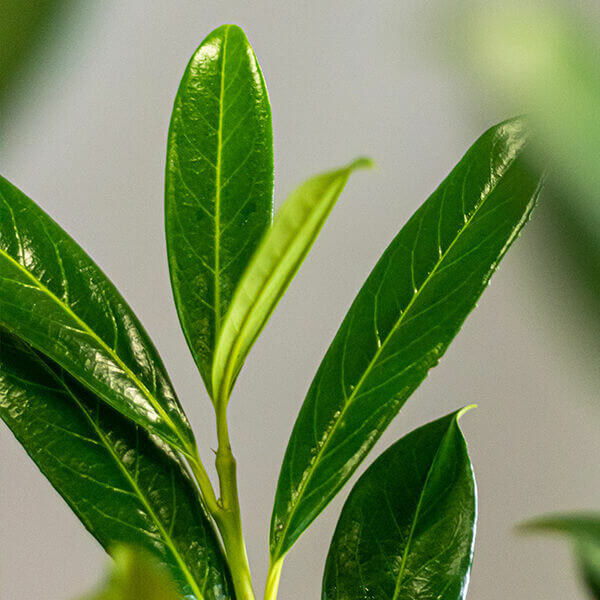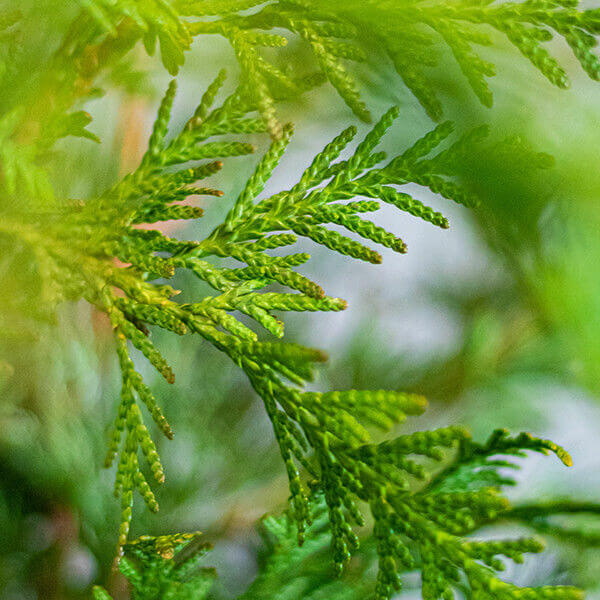Hedge Plants For Natural Landscapes
Hedge Plants For Natural Landscapes
Blog Article
Best Hedging Plants For Privacy Hedges
Enhance your garden's allure with lavish hedge varieties such as Yew (Taxus), Thuja, Laurel, Photinia, and Bamboo, commemorated for their structural integrity and ecological advantages.
Yew and Thuja supply evergreen coverage and winter season resilience, while Laurel uses rapid development and broad, fragrant leaves.
Photinia adds seasonal beauty with its dynamic red foliage, and Bamboo provides a low-maintenance, serene ambiance.
These hedges enhance air quality, reduce noise, and create tranquil, personal spaces.
Correct planting, spacing, and upkeep make sure energetic growth and environmental consistency.
Explore how these rich ranges can raise your garden's beauty and well-being.
Key Takeaways
Change Your Garden With Lush Hedge Ranges
- Select Yew for its thick, evergreen development and exceptional longevity.
- Select Laurel for its quick development and broad leaves, ensuring quick personal privacy.
- Pick Photinia for its vibrant seasonal foliage, which turns a striking dark red.
- Utilize Bamboo for a low-maintenance, winter-hardy hedge with aesthetic appeal.
- Space plants 2-3 per meter and prune frequently for optimal growth and health.
Popular Hedge Plants
When transforming a garden with rich hedge varieties, it's vital to think about popular hedge plants such as Yew, Thuja, Laurel, and Photinia due to their special attributes and advantages.
Yew (Taxus) is extremely respected for its durability and thick, green development, making it a prime option for sustaining landscapes.
Thuja is kept in mind for its evergreen foliage and robust winter season durability.
Photinia includes seasonal vibrancy with red leaves that darken gradually, producing vibrant visual appeal.
Laurel provides fast growth and fragrant, broad leaves, ideal for quick personal privacy.
In Addition, Bamboo is an exceptional choice for atmosphere, using a low-maintenance, winter-hardy alternative that improves the garden's aesthetic with its stylish, swaying walking sticks.
These choices deal with a variety of horticultural requirements and preferences.
Benefits of Garden Hedges
Garden hedges use a wide range of advantages, making them a valuable addition to any landscape. These natural barriers are economical to carry out and supply considerable wind security, boosting air blood circulation and contributing to sound decrease. The thick foliage of hedges like Thuja and Beech guarantees privacy by obstructing exposure, producing a serene and secluded environment.
Hedges likewise play an essential role in microclimate guideline, supplying a steady environment that cultivates plant growth and minimizes temperature changes. Their detailed leaf structures filter pollutants, enhancing air quality and contributing to a healthier garden community.
Moreover, hedges master noise reduction, taking in and deflecting acoustic waves to lower ambient noise levels. This double functionality of supplying both visual and acoustic personal privacy boosts the general harmony and aesthetic appeal of any garden.
Planting and Maintenance Tips
For a successful hedge, careful preparation of the planting location is crucial. Guarantee the soil has correct pH and drainage to support strong root advancement.
Space the plants appropriately for the chosen species. Water the hedge often throughout its initial growth stage, adjusting as required with seasonal changes.
Execute a methodical bug control and illness avoidance strategy, using natural or chemical treatments when necessary. Routinely examine for aphids, termites, and fungal infections.
Apply mulch to retain moisture and reduce weeds. Seasonal pruning promotes thick growth and air flow, vital for plant health.
Following these guidelines will help you cultivate a dynamic, properly maintained hedge that boosts the beauty of your garden.
Spacing and Cutting Standards
Spacing and Trimming Standards
Appropriate spacing and cutting are vital for cultivating healthy, aesthetically appealing hedges. Appropriate spacing makes sure each plant gets enough nutrients, light, and airflow.
Follow these guidelines for optimum hedge maintenance:
- Spacing: Position hedge plants 2-3 plants per meter to encourage robust growth.
- Pruning Techniques: Routine pruning is vital for maintaining desired hedge height and shape. Trim new growth in summer and cut down older wood throughout winter season.
- Seasonal Care: Change trimming schedules and techniques according to seasonal requirements to make sure plant health.
- Hedge Height: Regularly monitor and cut to maintain the desired hedge height and achieve uniform visual appeals.
Following these steps will guarantee your hedge flourishes, enhancing both the appeal and functionality of your garden.
Choosing the Right Hedge
Picking the Right Hedge
Selecting the appropriate hedge includes evaluating elements such as mature height, foliage density, and environmental resilience. Successful hedge plant selection needs understanding each species' growth qualities and site-specific flexibility.
For instance, Yew (Taxus) provides outstanding longevity and dense growth, while Thuja is notable for its winter durability. Additionally, considering maintenance requirements is vital; fast-growing types like Laurel or Privet demand regular cutting, whereas low-maintenance options like Bamboo or Ivy may be preferable for those looking for minimal maintenance.
Environmental elements such as soil type, light availability, and moisture conditions should likewise assist the choice process. This mindful method guarantees the picked hedges will grow, offering both practical and aesthetic advantages to the garden landscape.
Delivery and Planting Guidance
To ensure your hedge plants flourish, they should be provided by specialized couriers and planted promptly upon arrival.
Follow these important actions for effective planting:
- Soil Preparation: Improve the soil with raw material to enhance drainage and nutrient material.
- Planting Depth: Create a trench twice the width and equivalent to the depth of the root ball.
- Watering Strategies: Water completely after planting, keeping the soil regularly wet but not saturated.
- Mulching: Use a layer of mulch to retain moisture and suppress weeds.
Client Assistance and Service
Offered the important role of timely support in horticultural pursuits, our consumer assistance group is available six days a week through telephone, e-mail, and social media to provide professional recommendations and promptly resolve any concerns. Their commitment to quick action times makes sure client fulfillment by solving questions connected to plant health, optimum planting methods, and upkeep schedules.

Response Time
Telephone
6 days a week
Within 24 hr
This extensive support group, enhanced by an excellent 9.3/ 10 customer rating, highlights our commitment to improving the gardening experience for every single client.
Often Asked Questions
For How Long Does It Consider Hedge Plants to Develop?
Hedge plants normally need one to 3 years to end up being totally developed, with the specific period differing by types and growing conditions.
Efficient care during this crucial period is important for robust growth. Consistent watering, vigilant weed control, and appropriate fertilizer application are essential in promoting strong root advancement.
For instance, fast-growing types like Laurel may establish faster, while slower-growing varieties such as Yew might take longer. Thorough upkeep speeds up the establishment process, resulting in dense and healthy hedges.
What Are the Finest Hedge Plants for Personal Privacy?
The concern of the very best hedge plants for personal privacy includes assessing evergreen and deciduous options.
Evergreen hedges like Thuja, Laurel, and Cypress supply year-round coverage, guaranteeing continuous privacy.
In contrast, deciduous hedges such as Beech offer seasonal privacy, shedding leaves in colder months.
Secret maintenance tips for personal privacy hedges include regular trimming, fertilizing in spring, and correct spacing-- typically 2 to 3 plants per meter.
In addition, constant watering and diligent weed removal are essential for promoting healthy, thick development.
Can Hedge Plants Draw In Wildlife to My Garden?
Yes, hedge plants can attract wildlife to your garden by providing necessary benefits like shelter, food, and nesting websites, consequently improving regional biodiversity. Yew, holly, and laurel are excellent for bring in birds, while ivy supports a variety of bugs.
However, it is necessary to note that there are some disadvantages, such as increased upkeep to manage bugs and routine upkeep. Thoroughly choosing and maintaining hedge varieties can help stabilize these drawbacks and benefits, eventually fostering a dynamic and sustainable ecosystem in your garden.
Exist Any Flowering Hedge Plants Available?
Yes, there are flowering hedge plants offered that can boost the beauty of your garden.
For example, Elaeagnus, likewise understood as Olive Willow, produces fragrant white flowers in the fall, adding a touch of sophistication.
Photinia, another popular option, showcases vibrant red leaves that mature into an abundant green, developing a vibrant visual effect throughout the seasons.
To make sure these plants prosper, it's vital to practice correct pruning strategies and seasonal maintenance, such as trimming new development in the summer season and cutting down in the winter.
These steps will assist keep the health and aesthetic appeal of your blooming hedges.
How Do I Prevent Insects in My Hedge Plants?
To prevent pests in hedge plants, utilize natural bug control methods and maintain proper hedge care. Introduce advantageous pests like ladybugs, which victimize harmful pests, to create a balanced community.
Regularly check your hedges for signs of invasion and quickly remove any afflicted parts to avoid the spread. Make sure the health of your hedges by applying well balanced fertilizers and offering adequate water.
Make use of mulching to retain soil wetness and appropriate spacing to decrease plant stress and promote robust growth. These practices jointly assist in decreasing insect problems and maintaining a healthy hedge.
Conclusion
In essence, choosing the ideal hedge ranges such as Yew, Thuja, and Laurel can transform any garden into a tranquil sanctuary. These plants offer year-round greenery, enhance visual appeal, and offer practical advantages like sound reduction and wind defense.
Appropriate planting techniques, precise spacing, constant watering, and seasonal trimming are important for optimal development.
Trusted shipment services and expert consumer support guarantee a seamless experience from purchase to planting, making it easier than ever to elevate your outside area.
Garden hedges provide a multitude of advantages, making them a valuable addition to any landscape. These natural barriers are economical to execute and supply substantial wind protection, boosting air flow and Additional resources contributing to sound reduction. The thick foliage of hedges like Thuja and Beech ensures personal privacy by obstructing presence, creating a secluded and tranquil environment.

Pruning Techniques: Regular pruning is important for preserving desired hedge height and shape. Cut brand-new development in summertime and cut back older wood during winter.
Report this page